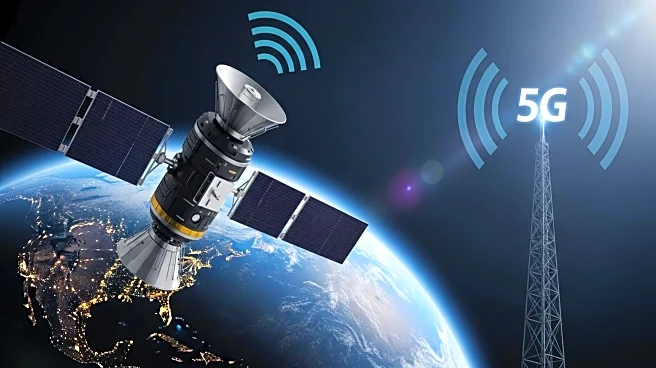What's Happening?
Recent advancements in algorithms have significantly improved the prediction of rain-induced attenuation for high throughput satellite (HTS) and 5G systems. The study highlights the limitations of conventional ITU models, which often rely on generalized rainfall data, leading to inaccuracies in predicting signal degradation. The new model integrates over ten years of locally measured rainfall data from the UAE, offering enhanced accuracy in predicting rain-induced attenuation. This model is particularly relevant for frequencies in the K and Ka bands, where rain can severely impact signal quality. The study demonstrates that at 30 GHz, regions like Ras Al-Khaimah experience significant attenuation during heavy rainfall, affecting satellite communication reliability.
Why It's Important?
The development of more accurate prediction models for rain-induced attenuation is crucial for the reliability of satellite and 5G communications, especially in regions with variable rainfall patterns like the UAE. By using localized data, the new algorithms provide a more precise understanding of how rain affects signal quality, which is essential for designing robust communication systems. This advancement can lead to better planning and implementation of satellite links, reducing the risk of communication disruptions. Industries relying on satellite communications, such as telecommunications and broadcasting, stand to benefit from improved service reliability and reduced operational costs.
What's Next?
The study suggests that the new model can be adapted to other regions by recalibrating it with local rainfall data, offering a flexible solution for global application. Future work will focus on collaborating with local providers to empirically assess the effectiveness of these techniques under actual operating conditions. This could lead to widespread adoption of the model, enhancing satellite communication systems worldwide. Additionally, the integration of adaptive techniques such as site diversity and power control could further mitigate the impact of rain-induced attenuation.
Beyond the Headlines
The study underscores the importance of considering local geographic and climatic conditions in communication system design. It highlights the potential for data-driven approaches to improve the accuracy of predictive models, which could be applied to other environmental challenges affecting technology and infrastructure. The findings also emphasize the need for continuous innovation in algorithm development to keep pace with evolving climatic conditions and technological demands.










